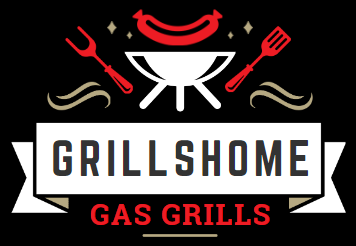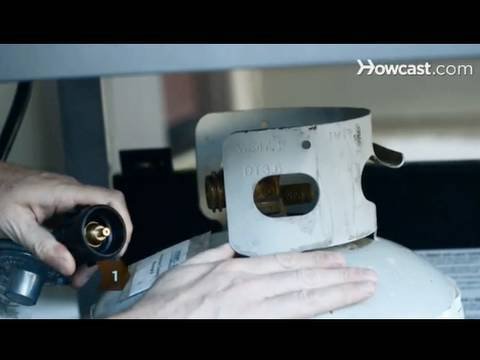Looking to fire up your gas grill and enjoy a delicious barbecue? Wondering how to get your propane tank connected so you can get grilling? Well, you’ve come to the right place! In this article, we’ll walk you through the simple steps on how to connect a propane tank to a gas grill. No need to fret or worry, we’ve got you covered with an easy-to-follow guide that will have you up and grilling in no time. So, let’s dive right in and get started on connecting your propane tank to your gas grill!
How to Connect a Propane Tank to a Gas Grill
Introduction
Connecting a propane tank to your gas grill is an essential step in preparing for a delicious outdoor barbecue. Whether you’re a seasoned griller or a beginner, knowing how to properly connect your propane tank ensures a safe and hassle-free grilling experience. In this guide, we will walk you through the step-by-step process of connecting a propane tank to a gas grill, covering all the important details and tips to make your grilling session a success. Let’s dive in!
Gather Your Supplies
Before starting the propane tank connection process, it’s crucial to gather all the necessary supplies. Here’s what you’ll need:
- A propane tank
- A gas grill with a compatible propane connection
- A propane regulator (if not built into your grill)
- A propane tank gauge (optional, but recommended)
- A wrench or adjustable pliers
- Leak detection solution or soapy water
Step 1: Safety First
Before you begin, prioritize safety by following these precautions:
- Ensure the grill and propane tank are placed on a stable, level surface away from flammable materials.
- Remove any dirt, debris, or flammable substances near the grill area.
- Ensure all knobs on the grill are in the “Off” position.
Step 2: Check for Leaks
Checking for leaks is a crucial step to ensure the safety of your propane tank connection. Follow these steps:
- Apply a small amount of leak detection solution or soapy water to the propane tank valve and regulator connection.
- Slowly open the propane tank valve.
- Observe if bubbles form at the connection point. If bubbles appear, there may be a leak.
- If you detect a leak, close the propane tank valve immediately and fix the issue before proceeding.
Step 3: Attach the Regulator
If your gas grill does not have a built-in regulator, you’ll need to attach one before connecting the propane tank. Follow these steps:
- Locate the gas line connection on your grill. It’s usually located near the grill’s control panel.
- Insert the regulator’s threaded end into the gas line connection.
- Use a wrench or adjustable pliers to secure the connection by turning it clockwise until snug.
Step 4: Connect the Propane Tank
Now that you have the regulator in place (if necessary), it’s time to connect the propane tank. Follow these steps:
- Place the propane tank on the designated holder or the ground, ensuring it’s stable and secure.
- Remove the plastic cap covering the propane tank valve.
- Align the valve on the propane tank with the fitting on the regulator or gas line connection.
- Insert the valve into the fitting and turn it counterclockwise to start threading it.
- Continue turning the valve until it’s hand-tight, and then use a wrench or adjustable pliers to give it an additional quarter turn to ensure a secure connection.
Step 5: Testing for Leaks
Once the propane tank is connected, it’s crucial to perform a leak test to ensure there are no gas leaks. Follow these steps:
- Prepare a mixture of soapy water or leak detection solution in a spray bottle.
- Spray the soapy water solution over the valve, regulator, and all connection points.
- Observe if bubbles form. If bubbles appear, it indicates a leak.
- If you detect a leak, close the propane tank valve immediately and address the issue before proceeding.
Step 6: Ignite the Grill
With the propane tank securely connected and leak-free, it’s time to ignite the grill and start cooking. Follow these steps:
- Make sure all grill knobs are set to the “Off” position.
- Open the propane tank valve slowly.
- Refer to your grill’s user manual for specific ignition instructions.
- Once the grill is on, allow it to preheat for a few minutes before placing food on the grates.
Tips and Best Practices
To enhance your grilling experience and ensure safety, here are some additional tips and best practices:
- Always read and follow the manufacturer’s instructions for your specific grill model.
- Check your propane tank’s expiration date and make sure it is well within the valid period.
- Regularly inspect and clean your grill, including the burners and gas lines, to prevent blockages and ensure optimal performance.
- Consider using a propane tank gauge to keep track of propane levels and avoid running out during a cookout.
- Store your propane tank in a well-ventilated area, away from direct sunlight or extreme heat.
- Periodically check for propane leaks by performing the leak detection test described earlier.
Connecting a propane tank to a gas grill is a simple process, but it requires attention to safety and proper technique. By following the step-by-step instructions outlined in this guide, you’ll be able to connect your propane tank with confidence, ensuring a seamless grilling experience. Remember to prioritize safety at all times, regularly inspect your equipment, and follow best practices for optimal performance. Now, go ahead and enjoy your backyard cookouts with family and friends!
How To Connect A Propane Tank To Your Gas Grill | Weber Grills
Frequently Asked Questions
How do I connect a propane tank to a gas grill?
To connect a propane tank to a gas grill, follow these steps:
What tools do I need to connect a propane tank to a gas grill?
You will need the following tools to connect a propane tank to a gas grill:
Can I connect a propane tank to a gas grill by myself?
Yes, you can connect a propane tank to a gas grill by yourself. Just make sure to follow the manufacturer’s instructions and safety guidelines.
How do I check if my propane tank is empty?
To check if your propane tank is empty, you can do the following:
What should I do if I smell gas when connecting the propane tank to the gas grill?
If you smell gas when connecting the propane tank to the gas grill, immediately follow these steps:
How often should I replace the propane tank?
The frequency of propane tank replacement depends on your usage and the size of the tank. Generally, propane tanks should be replaced when they are nearing the end of their lifespan or if they show signs of damage or corrosion.
Final Thoughts
In conclusion, connecting a propane tank to a gas grill is a simple process that can be done by following a few steps. First, ensure that both the tank and grill valves are closed. Then, attach the regulator hose to the tank and tighten securely. Next, connect the other end of the hose to the grill’s inlet, making sure it is properly aligned. Finally, check for any leaks by applying a solution of soapy water to the connections and watching for bubbles. By following these steps, you can safely and easily connect a propane tank to a gas grill for a delicious and convenient outdoor cooking experience.

